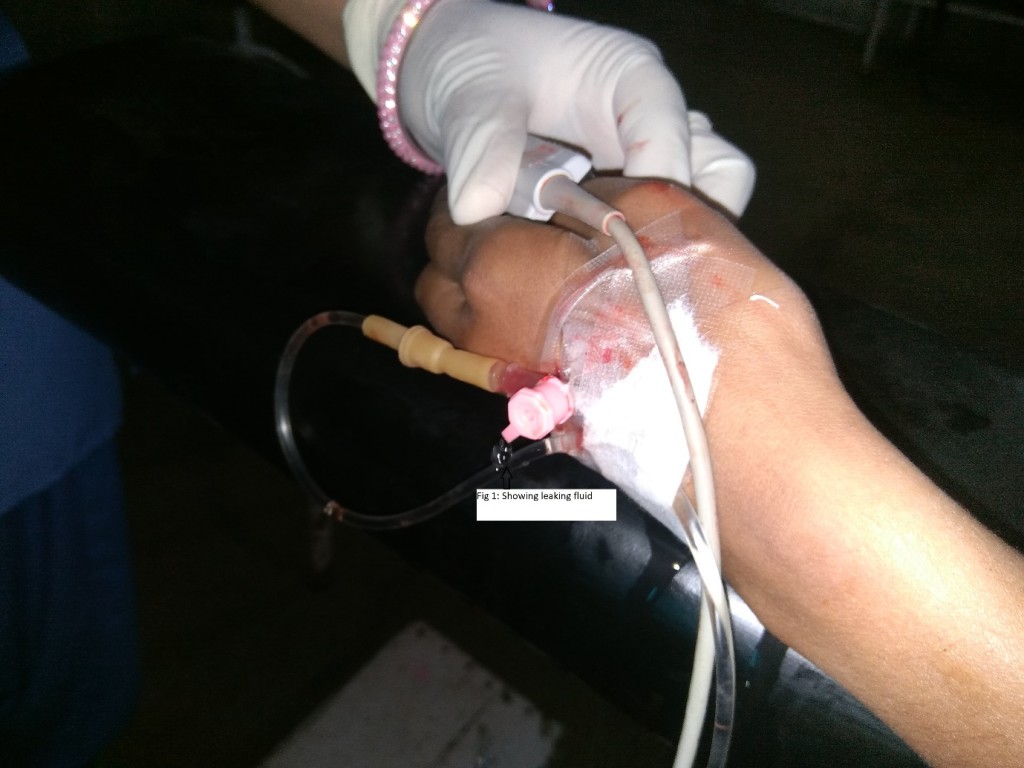Teena Bansal*, Jatin Lal**, Bharat Singh***, Somesh***
* Associate Professor (DA, DNB ),**Professor (MD), ***Junior Resident
Department of Anaesthesiology & Critical Care, Pt. B.D. Sharma University of Health Sciences Rohtak-124001 ( Haryana ), India
Corresponding Author:
Dr. Teena bansal
19/6 J, Medical Campus
PGIMS, Rohtak-124001 (Haryana) India
e-mail: aggarwalteenu@rediffmail.com
Mobile: +91-9034239374
Needlestick injury is very dangerous. To provide protection against such injury, safety cannulae are very important safety measure. Injection port of these cannulae provide needleless drug injection, thus preventing injuries. These cannulae have inbuilt valve mechanism to facilitate administration of drug without any backflow.
A 28 year old female was posted for diagnostic laparoscopy for primary infertility. 20 G intravenous cannula was placed. Intraoperatively fluid and drugs were given through the same cannula. The arm board was draped intraoperatively, so neither the arm nor the cannula was visible. Surgery lasted for 2 hours. At the end of the surgery, the drapes were removed. While giving reversal agent, suddenly a pop was heard and the drug could be injected but after removing the syringe, there was leakage of fluid through the injection port. Even after covering the injection port, the leak continued and when Ringer Lactate was stopped, blood started flowing back through the port. New intravenous cannula was placed and the previous one was removed.
On inspecting the cannula, the valve of the cannula was found to be displaced. One way valve of the cannula is an elastomeric sleeve. During the administration of drug via syringe, there is deflection of elastomeric sleeve allowing passage of drug through the port and after injecting drug, the sleeve returns to its original position preventing leakage or backflow.1 Our patient was under drapes intraoperatively and during that period, there was no problem in administration of drug. The problem occurred after removal of drapes. Had it been occurred intraoperatively, though we could have been able to administer drug with pop but the leakage of fluid and blood would have remained unnoticed. We wish to highlight that intravenous cannula should be observed intraoperatively particularly if there is resistance to administration of drug and then a pop is heard and the drug can be injected. It becomes an utmost important issue if the arm board is draped to prevent blood loss and air embolism as ingress of air can cause air embolism also.

REFERENCES
- Behura A, Ahuja M. A leaky intravenous cannula. Anaesthesia 2006;61:411. [PubMed] [Free full text] doi: 10.1111/j.1365-2044.2006.04603.x




 Facebook
Facebook Twitter
Twitter GooglePlus
GooglePlus Youtube
Youtube